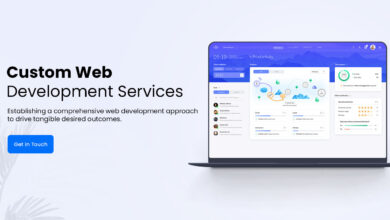7 Tips To Retain Your Best IT Talent Through IT Training Program
IT Talent Through IT Training Program

IT talent shortfall is a major concern for organizations around the globe. Even before this pandemic, IT skill shortage was at an all-time high and this pandemic has accelerated the pace even more. The high employee turnover rate in IT has made matters worse for businesses. Combine that with a high attrition rate, which means that more IT workers might resign or retire in the coming years. This can negatively impact the workforce of a company, especially its IT department.
How can CIO retain their existing IT talent in such a situation and prepare them for future challenges? The best way to do that is to start an IT training program that can nurture employees, hone their skills and convert them into future IT leaders. Once your IT workers get growth and learning opportunities, they will be more satisfied with their jobs and less likely to switch jobs.
In this article, Anti-Dos will share seven effective tips to retain IT talent by using an IT training program.
7 Tips To Retain Your Best IT Talent
Here are seven tips you can use to retain the best IT talent with an IT training program.
1. Focus On The Mission
Your IT training program is an indicator of your CIOs commitment to its team members. That is why your IT training should not be limited to upskilling but should go above and beyond that. Focus on creating meaningful and long-lasting relationships with your team members so you can make an impact together. Put your organization’s culture at the heart of your IT training program.
Make sure you are crystal clear about the mission, vision, and core purpose of your IT training program and communicate it to all the training program participants to make sure that everyone is on the same page. Make your employees feel valuable, listen to them and make them realize that their feedback is valuable for you.
2. Start Small and Early
“The best time to plant a tree was 20 years ago. The second best time is now.”
This is a popular Chinese proverb but did you know it actually holds true in the case of an IT training program? Let me explain how. If your organization doesn’t have an IT training program yet, the best time to start it is now. Instead of going all out and pouring all your resources into developing your IT training program, it is highly recommended that you start small and then take it from there. Take small steps and make adjustments to your program according to employee feedback and you will end up with an IT training program that will bear fruit. You will start to see a positive difference in your IT worker’s performance. Your employee turnover rate will come down.
3. Develop a Learning Culture
The environment you provide to your employees at the workplace and organizational culture can influence their performance and behavior in many different ways. That is why it is important to create a learning culture in your organization before launching an IT training program. After all, what’s the point of launching an IT training program when your IT team is not interested in learning new things and polishing their skills.
There are many ways to develop a learning culture in your organization. Reward employees who indulge in continuous learning. Set a great example for others to follow. Hire curious people who are willing to learn. Form partnerships with universities and industry experts or consulting companies who can help your employees learn new skills.
4. Prioritize Employee Interests
One of the most common mistakes most businesses make when developing their IT training program is they ignore the interest of the most important stakeholder, IT workers. That is the reason why most IT training programs fail to achieve their objectives. If you want to implement a successful IT training program in your organization, learn what your employees are interested in learning and design your IT training program accordingly. This way, they will stay highly engaged as the topics covered were of their interest. When engagement levels are higher, employees tend to learn and retain what is being taught.
5. Don’t Ignore Non-Technical Skills
Ouellette Associates did a survey and asked CIOs to rank what skills they look for when hiring new employees or want to develop in their existing IT workforce. The results were shocking. Only two out of fourteen skills were technical in nature while the remaining twelve were either human factor or core skills. Some of the key skills that mattered were the ability to influence others and lead the organization through change, communication, and collaboration. Just because you are offering training to IT staff does not mean that you should neglect non-technical skills altogether.
6. Keep Investing
Your IT training can never be successful if you set it and forget it. You need to constantly improve it according to the changing times. The pace at which the IT industry evolves can make your IT training program outdated in less than a year. That is why it is important to constantly update it with fresh and engaging content and the latest trends. For instance, if DDoS attacks start to grow, your IT program should have DDoS protected DNS. Yes, you might have to invest time and money to make it possible but it is well worth the effort.
7. Develop a Brand Which Is Committed To Grow
Put your brand behind IT training initiatives especially, if your brand is popular. That is when your IT training program not only attracts internal talent but can also lure IT, professionals, from other companies as well. If you can provide your IT professionals with the right environment and opportunities, they will thrive.
Branded initiatives are the ones that succeed because people have a stronger bond with a brand as compared to a training provider or institute offering training. This will also keep your IT workers more engaged as it is backed by your brand name.
How do you retain your best IT talent? Share it with us in the comments section below.




